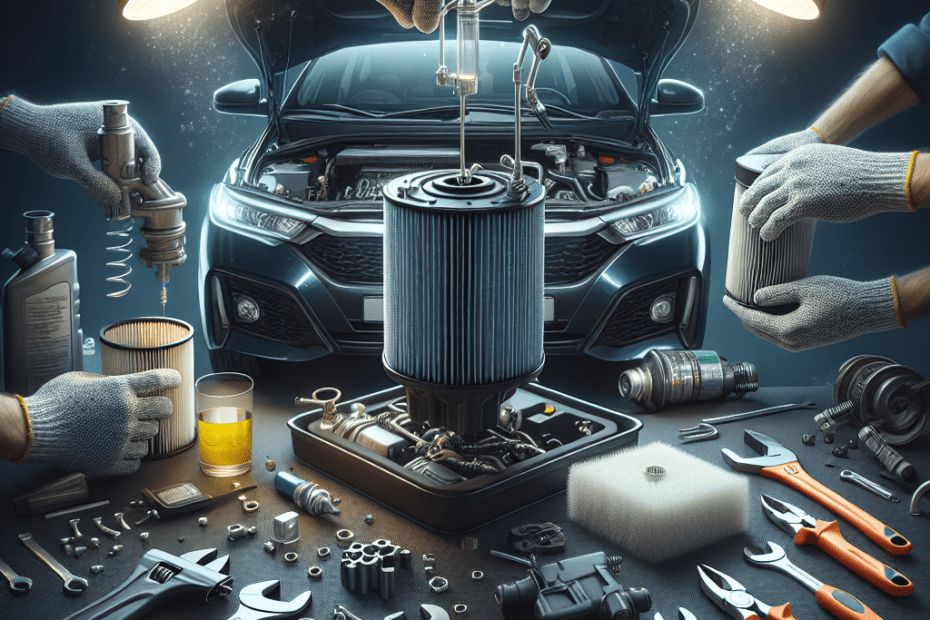How to Replace Your Car’s Fuel Filter
Replacing a fuel filter is vital for maintaining a car’s fuel system. According to a survey by the Car Care Council, about 1 in 5 vehicles has a fuel system component in need of maintenance. A clogged fuel filter can lead to reduced engine performance and even significant damage.
Why Replace the Fuel Filter?
Fuel filters trap dirt, rust, and debris from the fuel before it reaches the engine. Over time, these contaminants clog the filter. When the filter becomes too dirty, it restricts the flow of fuel, making the engine work harder. This can lead to:
- Reduced fuel efficiency
- Stalling or jerking during acceleration
- Difficulty starting the vehicle
- Potential damage to fuel injectors
Periodic replacement of the fuel filter ensures the engine operates smoothly and efficiently.
Tools and Materials Needed
Before starting the task, gather these tools and materials:
- New fuel filter
- Wrenches (various sizes)
- Screwdrivers
- Rags or paper towels
- Safety gloves and eyewear
- Vehicle repair manual (for specific instructions)
Step-by-Step Guide
| Step | Action |
|---|---|
| 1 | Relieve Fuel System Pressure: Before starting, relieve the fuel system pressure to avoid any fuel spray. Refer to the vehicle manual for the exact procedure. |
| 2 | Disconnect the Battery: Ensure safety by disconnecting the battery’s negative terminal to prevent electric shocks or sparks. |
| 3 | Locate the Fuel Filter: The fuel filter is usually located along the fuel line, either under the car or in the engine bay. Check the manual for the specific location. |
| 4 | Disconnect the Fuel Lines: Carefully disconnect the fuel lines from the filter. Use a catch basin to collect any spilling fuel. |
| 5 | Remove the Old Filter: Remove the old fuel filter by loosening the brackets or clamps holding it in place. |
| 6 | Install the New Filter: Attach the new fuel filter, ensuring the directional arrow points towards the engine. Secure it with brackets or clamps. |
| 7 | Reconnect the Fuel Lines: Reconnect the fuel lines securely to avoid any leaks. |
| 8 | Reconnect the Battery: Reconnect the battery’s negative terminal once the filter is in place. |
| 9 | Check for Leaks: Start the car and check for any fuel leaks. If there are no leaks, the installation is complete. |
Tips and Precautions
When replacing the fuel filter, follow these tips and precautions:
- Always work in a well-ventilated area.
- Wear safety gloves and eyewear to protect yourself from fuel sprays.
- Refer to the vehicle’s repair manual for specific instructions regarding the fuel system and its components.
- Dispose of the old fuel filter according to local hazardous waste disposal regulations.
Key Takeaways
- Replacing the fuel filter is crucial for maintaining engine performance and fuel efficiency.
- Gather all necessary tools and materials before starting the job.
- Follow a step-by-step process to replace the fuel filter safely.
- Check for leaks after installation to ensure the new filter is secure.
FAQ
Q1: How often should they replace the fuel filter?
A1: It varies by vehicle, but generally, they should replace the fuel filter every 20,000 to 30,000 miles. Check the vehicle’s manual for specific recommendations.
Q2: What are the signs of a clogged fuel filter?
A2: Common signs include reduced fuel efficiency, difficulty starting the car, stalling, and jerking during acceleration.
Q3: Can they clean the fuel filter instead of replacing it?
A3: No, fuel filters are designed to be replaced, not cleaned. Once clogged, replacing it is the best option to ensure proper fuel flow.
Q4: Is it safe to replace the fuel filter themselves?
A4: Yes, with the proper tools, safety gear, and instructions, many people can replace their fuel filters. However, if unsure, they should seek professional help.
Q5: Where can they dispose of the old fuel filter?
A5: They should dispose of the old fuel filter at a hazardous waste disposal site or take it to an automotive parts store that offers recycling services.
